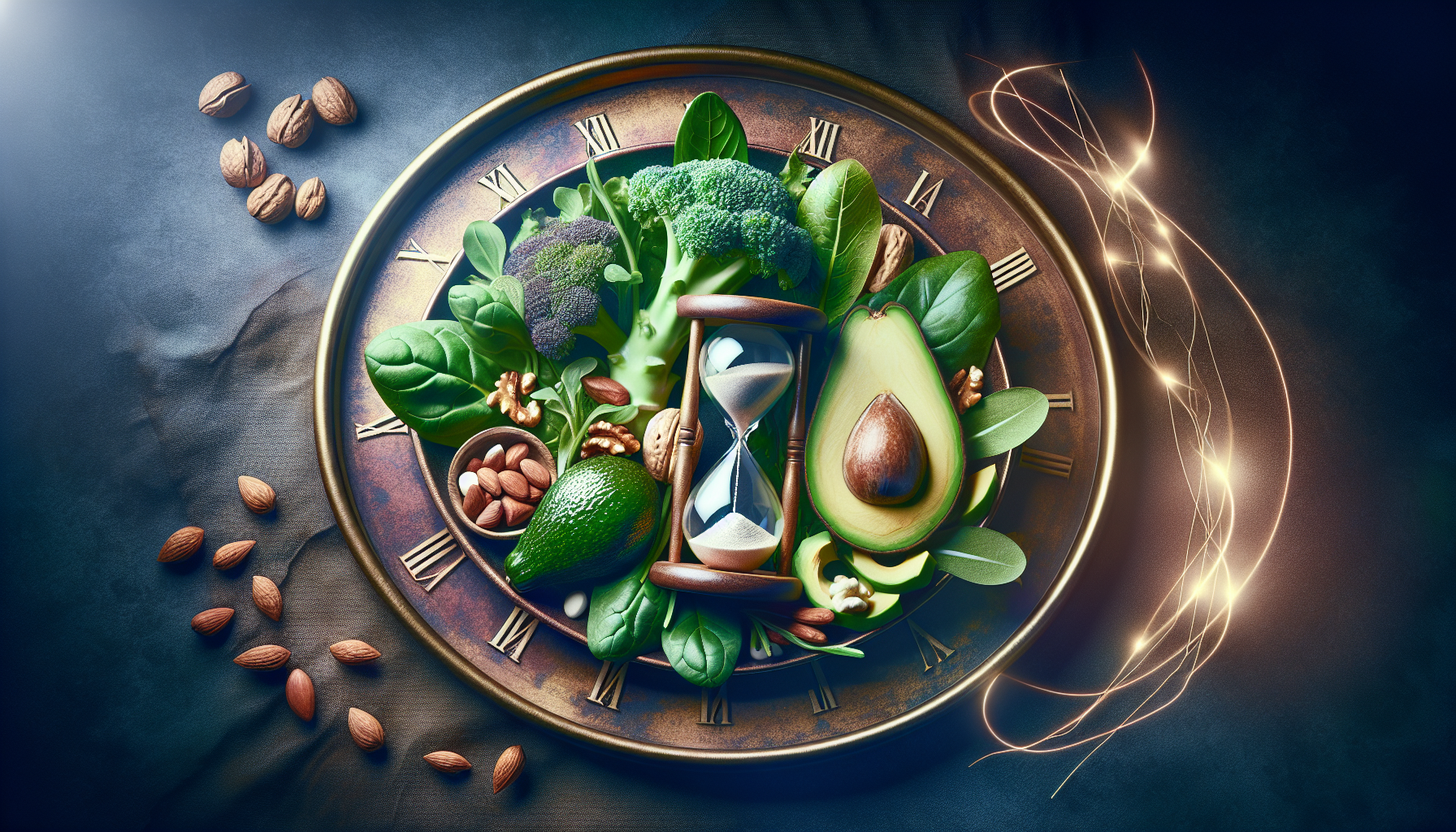What’s your relationship with food like? Are you someone who’s always hungry for the next meal, or do you find yourself curious about trends like fasting and the keto diet? Maybe you’ve stumbled upon the concept of oxalates, and you’re wondering how all these elements interact. Let’s break it down together.

Understanding Fasting
Fasting isn’t just about skipping meals; it’s a practice with deep historical roots and various modern interpretations. Whether you’re doing intermittent fasting or longer water fasts, understanding how fasting works can be key to how it interacts with your body, especially alongside dietary styles like keto.
What Is Fasting?
At its core, fasting simply means abstaining from food for a specified period. There are countless ways to approach it, from limiting your eating window each day to longer term fasts lasting several days. But no matter how you do it, the idea is to provide your body time to reset, heal, or just take a break from constant digestion.
Benefits of Fasting
Fasting can offer a plethora of benefits. Some people find they have more mental clarity, while others appreciate weight loss and improved metabolic health. Fasting can trigger autophagy, a process where your body cleans out damaged cells, helping you feel rejuvenated. It’s intriguing how our bodies can adapt to these periods of no food.
Types of Fasting
There are several methods of fasting you might encounter, such as:
- Intermittent Fasting (IF): This involves cycling between eating and fasting, often on a daily basis (like the 16/8 method, where you fast for 16 hours and eat for 8).
- Extended Fasting: Going without food for 24 hours or longer. This method takes more preparation and thought, as it can be quite intense.
- Alternate-Day Fasting: As the name suggests, this involves fasting every other day. It’s less common but can be effective if done mindfully.
Understanding these types can help you choose an approach that complements your lifestyle and dietary choices.
What Is the Keto Diet?
If you’ve been around the wellness community lately, you’ve probably heard about the ketogenic diet, or keto for short. This low-carb, high-fat approach aims to help your body enter a state of ketosis, where it burns fat for fuel instead of carbohydrates.
The Basics of Keto
Keto typically involves consuming a high amount of fats (around 70-75% of your daily intake), moderate protein (20-25%), and very low carbohydrates (about 5-10%). This shift in macronutrients forces your body to adapt by burning fat for energy instead of glucose.
Benefits of the Keto Diet
You might find that keto offers a range of perks:
- Weight Loss: Many people turn to keto specifically for weight loss, finding success by sticking to its high-fat, low-carb guidelines.
- Reduced Appetite: Fats are fulfilling, leading to less hunger and more controlled eating patterns.
- Improved Blood Sugar Levels: Lowering carbohydrate intake can stabilize blood sugar, which is a game-changer for individuals with insulin sensitivity.
- Cognitive Boost: Some folks report better focus and cognitive function, attributing it to the brain’s ability to utilize fats as fuel.
Like fasting, the keto diet holds specific advantages that can be appealing, but it’s essential to understand its nuances and effects.

The Role of Oxalates
Now, let’s pivot and chat about oxalates. You may have come across this term if you’ve looked into foods known to be high in oxalates, like spinach, beets, and nuts. But what are they, and why should you care about them?
What Are Oxalates?
Oxalates are naturally occurring compounds found in many plant foods. In some cases, your body can use these compounds, but in others, they can contribute to health concerns, especially when consumed in excess. They can bind with calcium, sometimes leading to the formation of kidney stones, which is where lots of people start paying attention to their oxalate intake.
Foods High in Oxalates
To make it easier for you, here’s a quick table of common foods that are high in oxalates:
| Food | Oxalate Content (mg/100g) |
|---|---|
| Spinach | 970 |
| Rhubarb | 860 |
| Beets | 400 |
| Almonds | 250 |
| Whole Wheat Bread | 225 |
| Sweet Potatoes | 150 |
This isn’t to scare you away from these foods. Many of them are nutritious and beneficial in many ways. Moderation is key here.

The Interaction Between Fasting, Keto Diets, and Oxalate Intake
So, how do these three elements interact? It may seem complicated, but understanding this interaction can help you make informed choices.
Oxalates and Fasting
When fasting, your body undergoes metabolic changes. Depending on the length of your fast, your body may become more efficient at using stored fat for energy. However, if you’re consuming foods high in oxalates just before a fast, that can cause issues, especially if you’re prone to kidney stones.
Oxalates and Keto
The keto diet often involves high consumption of certain foods that might also be high in oxalates. For instance, many people on keto consume nuts and leafy greens, both of which can have significant oxalate levels. If you’re not careful, this can lead to an increased risk of kidney stones or other health concerns.
Fasting and Keto Combined
When you pair fasting with the keto diet, the potential interactions grow even more complex. Both practices can affect your metabolism and how your body processes nutrients. For instance, fasting may enhance the benefits of the keto diet, allowing your body to more effectively switch to burning fat for fuel.
However, both practices also challenge your body’s ability to balance oxalate intake.

Balancing Oxalate Intake During Fasting and Keto
Given that oxalate intake can lead to health concerns, especially when high levels are consumed during fasting or keto, how can you strike a balance?
Tips for Managing Oxalate Intake
- Limit High-Oxalate Foods: While you don’t need to eliminate them entirely, reducing your intake can be a wise move, especially if you’ve had issues with kidney stones in the past.
- Increase Calcium Intake: Foods high in calcium can help mitigate the absorption of oxalates in your gut. Think dairy or fortified alternatives if you’re vegan.
- Stay Hydrated: Drinking plenty of water can help flush out any excess oxalates, reducing the risk of them crystallizing in your body.
- Mind Your Fasting Schedule: Pay attention to when you’re consuming high-oxalate foods. For instance, if you’re fasting, perhaps save those spinach salads for a day when you’re not fasting.
Listening to Your Body
Ultimately, it boils down to tuning into your body’s signals. If you notice discomfort after consuming certain foods or during fasting, take note. Your body knows best, and adjusting your diet according to how you feel can make a world of difference.

The Bottom Line
Finding balance among fasting, the keto diet, and oxalate intake requires an understanding of your preferences and health goals. Each element contributes uniquely to your well-being, but they also pose certain challenges when mixed together.
You might find immense success by experimenting with different methods. Perhaps you’ll discover that keto works well for you, but you must be mindful of the oxalate-heavy foods you choose. Or maybe fasting feels like a breath of fresh air, but you realize that incorporating more calcium-rich foods makes it all the more manageable.
In any case, your health journey is uniquely yours. Don’t stress too much about fitting into a mold. Play around with different strategies and listen to your body. Whether you choose to fast, follow a keto diet, or pay closer attention to oxalates, knowing how these components interact will steer you in the right direction.
As you navigate this landscape, keep in mind that it’s not about perfection but rather progress. After all, food is part of your life, and understanding how it works within your body can lead to a healthier, more satisfying relationship with what’s on your plate. Now, what will you choose for dinner tonight?

